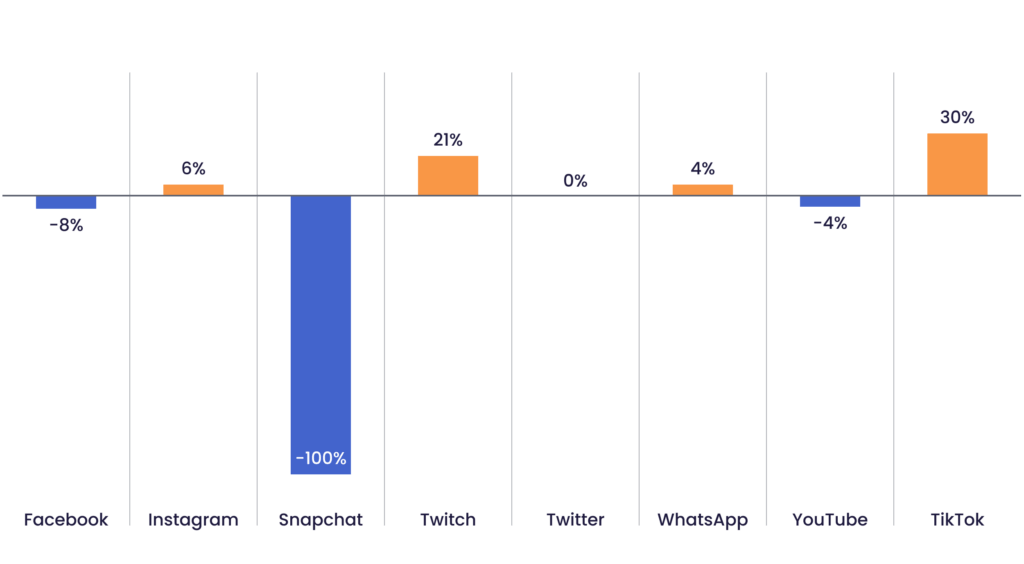
Sports marketing strategy essentials
Do you remember the last time you revisited your sports marketing strategy? Have you been following the latest sports marketing trends and made sure you’re staying on top of them?
Well, in this ever-changing digital world, sports organizations, like yours, need to frequently revisit their strategies – including their sports marketing strategy.
However, if you haven’t revisited your sports marketing strategy and adapted it to the recent changes and trends in sports, then you don’t need to fear just yet. Because there is still time to adjust your course.
In this blog post, we will present 10 key components needed to create a successful and highly profitable sports marketing strategy.
So without further ado….
Before we dive right in...
Subscribe to our blog today to ensure that you never miss valuable posts such as this one. We are passionate about helping sports organizations deliver a world-class fan experience, because better fan experience means better business. So why not use this opportunity to the fullest?

Here are 10 components you need to include in your sports marketing strategy today

Adopt a supporter-centric approach

The first component that you need to include in your sports marketing strategy today is to adopt a supporter-centric approach.
In this digital age, it’s the consumer who rules. More and more people are choosing to interact with brands online and on the go via their smartphones. They demand experiences that are personal, engaging, and relevant – no matter when and where they choose to interact with your brand. These expectations are no different for sports fans and supporters.
Supporters want to interact with your sports brand both in and outside of the arena – when and how they want. According to a survey conducted by Deloitte, 65% of fans said that they wanted to receive some form of content or information at least monthly during the off-season. In other words, fans expect a year-around fan engagement.
How exactly can you deliver a year-around experience that engages your fans?
Well, you need to put your supporter at the core of your sports marketing strategy, which means that you need to create a supporter-centric marketing approach. But to do so, you first need to understand your supporters’ needs, preferences, and behavior patterns.
So to create a supporter-centric marketing strategy, here’s what you need to do:
- Use your supporter data to understand their underlying behavior, interests, and engagement.
- Segment your supporters into different groups based on these insights.
- Target your different segments with communication and interactions that are relevant, engaging, and personal to your target audience – no matter which channel or platform they decide to do so in.

Personalization drives revenue and fan loyalty

Personalization is one of the most important components to creating a supporter-centric sports marketing strategy, we believe it should be treated as a component of its own.
Did you know that companies that excel at personalization generate 40% more revenue from such activities? Yes, you read that correctly.
Supporters today don’t only expect personalization, they demand it. And the Covid-19 pandemic has only accelerated this expectation.
For sports organizations, this means redefining the relationship you have with your supporters. To show you that this isn’t just a temporary thing but something that will remain, check out the results from this study by Deloitte:
Did you know
[…] “more than 60% of fans agreed that having a great “year-round experience” would make them more likely to become more engaged with their team in the coming season, while 55% said that it would make them more likely to purchase a ticket in the future.”
Source: Deloitte, 2021
What this study tells us is that sports organizations cannot only rely on ticket sales and other traditional revenue streams anymore. Because even when supporters are able to return to the stadiums, the change in supporter behavior is here to stay. And this includes the expectation to receive a personalized supporter experience outside of the stadium. That is why sports organizations need to make personalization a key part of their sports marketing strategy.
So how can you deliver a personalized supporter experience? The short answer is that you need the right data.
Which brings us to our next point …

Working data-driven is key

Today, like all other organizations, sports organizations have more data about their supporters at their fingertips than ever before. And sports organizations that implement a data-driven approach in their sports marketing strategy will be able to drive the best results.
Why is this the case?
Because by working data-driven, you are able to uncover insights about your supporters. Insights that reveal your supporters’ specific needs, preferences, and behaviors. So, if you are able to unveil these insights about your supporters, you are then able to act on them, for instance through personalization.
Here are some of the benefits of adopting a data-driven approach to your sports marketing strategy:
- Optimize your current revenue streams
- Uncover new revenue opportunities
- A deeper understanding of supporters’ needs, preferences, and behaviors
- Improved and more effective supporter engagement and loyalty – by delivering marketing efforts that are personalized and relevant
- Adopt a supporter-centric sports marketing strategy
- Ability to identify high-value supporters and retain them.
Moreover, adopting a data-driven approach will not only help your sports marketing efforts but also your working process on an organizational level, such as:
- Accurate decision-making based on real data insights
- Effective and streamlined working through data democratization
- Sustainable and consistent growth
- Better monitoring and reporting of your sports marketing efforts
- The ability to identify what works and what needs improving in your sports marketing strategy
- Better sponsorship and partnership deals (which we will cover later in this blog post).
However, there are some hurdles that can stop sports organizations from working data-driven
These include
- data stored in many different places – and not having it centralized in one place.
- data in silos – since your data is stored in different places, this means that your data is not accessible to all members of your sports organization.
- obsolete data – your data is outdated
- incomplete data – since your supporter data is not unified, you cannot receive a complete picture of each supporter.
These challenges have in the past made it difficult for organizations to work data-driven. These are some of the hurdles led to the invention of Customer Data Platforms (CDPs) – which were specifically designed to collect and unify data from any type of source, gain insights from the data, and in turn act on those insights.
By implementing a Sports CDP into your tech infrastructure, the above challenges can be easily overcome. Moreover, if your CDP vendor is also specialized in sports, then you can rest assured knowing that your sports marketing strategy will be better than you could have ever imagined.

To see how this would look in action, explore the Data Talks Sports CDP demo >>
Finally, by working data-driven, you are also setting the stage to truly leverage the upcoming components in this blog post.

Content is still king

As we have seen previously in this blog post, an increasing number of supporters expect to receive some form of content during the off-season. Moreover, with the rapid increase of content creation and consumption across different platforms and channels, the demand for additional sports content has also grown.
According to Nielsen’s 2022 global sports marketing report:
The growing appeal of related sports content

Source: Nielsen Fan Insights, August 2021; Australia, Brazil, Canada, China, France, Germany, India, Indonesia, Italy, Japan, Nigeria, Russia, South Korea, Spain, Thailand, U.K. and U.S.
As we can see, the interest in sports content (both related to and not related to live sports events) is becoming more important, especially among the younger generation. This is a crucial piece of information since the same generation, Generation Z, also is the biggest global consumer cohort – with a spending power of a whopping $140 million in the US alone.
Another type of content that sports organizations can leverage is content generated by the supporters themselves. This content is usually created and shared via social media, with TikTok and Twitch having the highest usage rate gains in comparison to other platforms between April 2020 – August 2021.

To learn more about Gen Z, check out this article here >>
As you can see, there is a mountain of opportunities for content creation that sports organizations can leverage and capitalize on.
How can you achieve this?
By collecting relevant data about your supporters, using for instance a Sports Customer Data Platform, you are able to uncover the necessary insights about your supporters in order to:
- understand what type of content your supporters desire
- in which channels and/or platforms they would prefer to interact with your content
Once you have uncovered these insights, you will be able to deliver hyper-personalized content to your fans and ensure that you deliver a year-around supporter engagement.

Prioritize OTT

OTT stands for Over-the-top media service and is a platform that your sports organization owns. Unlike traditional TV, an OTT platform allows sports organizations to offer streaming content to their supporters via their preferred devices, such as mobile phones or tablets.
Here you can broadcast and stream sports content, including content such as:
- Player interviews
- Game analysis
- Behind-the-scenes footage
- Pre-recorded extras
- Archived footage
- Player Q&A’s
- Fan-generated content
- Fantasy leagues
- Celebrity endorsements
- Team news
- Exclusive deals
- Offers
- Fans only access
-
And the usage of OTT will keep growing, check out the fact box below:
Did you know
[…] “as connected devices gain momentum as the great amplifier of content, access to content continues to expand, with 40.7% of global fans now opting to stream live sports events through digital platforms.”
Source: 2022 global sports marketing report, Nielsen, 2022.
And the benefits of building an OTT platform are many, but to name a few:
- Reach a younger, more wealthy, and more engaging audience – generation Z
- Ability to target your audience with hyper-personalized content and ads – since you own the platform, you will also gain better data
- Retargeting – OTT is also a great channel to use for retargeting your supporters with ads that are relevant to them.
So if you want to create a sports marketing strategy that is successful and sustainable, as well as leverage your marketing campaigns and deliver hyper-personalized supporter experiences, then you should make your OTT platform a priority.

Leverage your social media platforms

According to Nielsen, 47% of people who watch sports on TV or via digital platforms simultaneously watch other live content. Among these different multi-screen viewing activities, social media engagement makes up 32% of this total number. And this number is even higher for Gen Z, where social media stands for 46% of their viewing activities.
Change in social media usage for sports news and content
April 2020 – August 2021

Source: Nielsen, 2022
As you can see in the graph above, it’s TikTok and Twitch that have seen the greatest increases in usage. And it is these platforms that are becoming the outlets for not only multi-screen interaction, but also for user-generated content.
It then goes without saying: making social media a part of your sports marketing strategy should be a given. By being present and playing an active role in your supporters’ favorite social media platforms, you are able to:
- Open a window into the personal lives of your supporters and understand their specific needs, preferences, and behaviors.
- Maximize fan engagement by interacting with them on social media, for instance via accounts that belong to your club or athletes.
- Leverage the social media data you have collected about your supporters to find and create new monetization opportunities.
By using a Customer Data Platform, you can also collect this data and unify it together with all other data you have about each supporter – letting you create a 360-degree view of each supporter.

Make social justice a key component of your marketing strategy.

In this day and age, sports organizations possess powerful platforms that can be leveraged for the greater good. And addressing issues related to injustice and inequality are two pivotal examples.
Deloitte described this ever so eloquently:
“Social justice has become so critical that future growth will likely be predicated upon how authentic organizations are in responding to this challenge. Players and fans increasingly expect leagues and teams to play a proactive role in the social justice movement. Deloitte’s Global Millennial Survey 2020 supports the notion that a proactive response to social injustice may be especially important to younger generations, many of whom tend to be more values-driven in how they engage with brands and businesses.”
– Deloitte’s US sports outlook 2021
There is a great opportunity for sports organizations to address social justice issues on their platforms. This can be achieved by allowing athletes to act as advocates and influencers (more about influencers under component 9) for different questions that they themselves find relevant, such as social justice issues and women’s sports.
Speaking of women’s sports…

You should prioritize women's sports

It’s impossible to ignore the number of growth women’s sports have been experiencing.
In fact, more than 68% of those admitting a rise in interest in women’s sports in the UK said that the new interest is driven by their enjoyment of recent broadcast coverage of women’s sport. Moreover, women’s sports are also predicted to be valued a great deal more than a billion dollars in the upcoming years.
So remember, making women in sports a part of your sports marketing strategy isn’t just a social activism initiative.
- to generate substantial TV audiences
- deliver value to sponsors
- draw tens of thousands of fans per event
However, a challenge that women’s sports face is that they do not receive as much media exposure as men’s sports. Since increased media exposure essentially leads to increased sponsorship and overall revenue growth, women’s sports only receive a small fraction of this money. Number-wise, of the US$ 57 billion doled out in global sports sponsorship in 2020, less than $1 billion was invested in women’s sports.

Learn more about our initiative: Women in sports: beyond the hashtag here >>
By making women in sports an essential part of your sports marketing strategy, you are at the same time ensuring that women’s sports receive more exposure – across your own channels and beyond.

Influencer marketing to drive personal connections
Today, an increasing number of sports athletes are driving personal connections on different platforms and channels – especially on social media.
Sports fans are looking to athletes and other sports influencers that champion societal issues that they believe in. They view these athletes as both meaningful and personalized connections. And this trend can be seen across industries beyond sports. On a global scale, 71% of consumers involved in a survey said that they either completely or somewhat trust opinions and ads from influencers about different brands and products.

Did you know
“Across 15 marketing mix modeling studies between 2017 and 2020 in France, for example, 30% of the purpose-driven campaigns increased short-term sales by 50%. Longer term, the purpose-driven campaigns improve sales between 1.2x and 3x.”
Source: Nielsen, 2022
Moreover, the increased interest and trust in influencers is particularly prevalent among micro-and nano influencers. The reason is that these influencers with fewer followers make more personal connections with followers and thus have a greater impact on driving supporter behaviors, such as trying a new product or attending a sporting event.
By analyzing your supporter data, you can understand which influencers and questions are most relevant to them. With this data, your sports organization can collaborate with relevant influencers that have the biggest influence on your follower base and that can help you drive supporters to action.
So if you haven’t already, then you should definitely consider including influencer marketing in your overall sports marketing strategy.

Incorporate new sponsorship opportunities

The change in consumer behavior, in combination with the disruption brought about by the pandemic, has also led to changes in the relationships between sports organizations and brand partnerships. Despite this, supporters still experience a high level of trust toward sponsorships at sporting events:
Did you know
“According to Nielsen’s 2021 Trust in Advertising Study, 81% of global respondents either completely or somewhat trust brand sponsorships at sporting events.”
Nielsen’s study also shows that there is a strong correlation between strong sponsorship messaging and purchase behavior. So if you combine this with supporters’ high trust, sports organizations can tap into new and lucrative sponsorship opportunities.
Some brand partnership and sponsorship opportunities that are either growing or are projected to grow exponentially faster than their traditional counterparts are:
- Crypto/Blockchain/NFT
- Automotive
- Insurance
- Retail
- Unbundled sponsorship investment in women’s sports
- Influencer partnerships
In addition to the above suggestions, sports sponsorships can also discover new sponsorship opportunities when analyzing their supporter data. By doing so, you can gain insights that reveal your supporters’ needs, preferences, and behavior patterns.
Moreover, by incorporating new brand partnerships, sports organizations can also reach and engage with new audiences – and grow their fanbase in the long run.
Conclusion
In today’s digital age, sports organizations need to revisit and adapt their sports marketing strategy. In this blog post, we have covered some of the trends that sports organizations should incorporate:
- A supporter-centric approach
- Personalization to revenue and fan loyalty
- Working data-driven
- Content
- Over-the-top streaming service
- Leverage your social media platforms
- Make social justice
- Women in sports
- Influencer marketing to drive personal connections
- New sponsorship opportunities
By doing so, sports organizations will not only stay in the game, they will stay on top of their game.

Leave a Reply